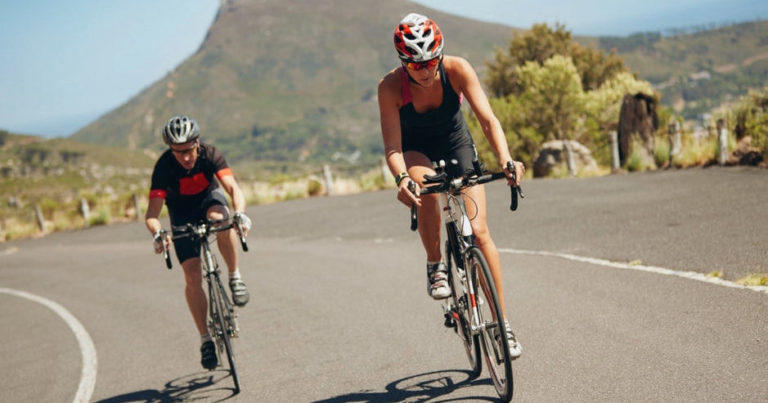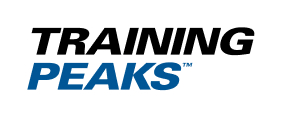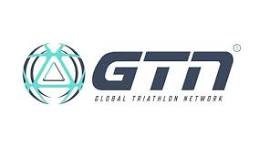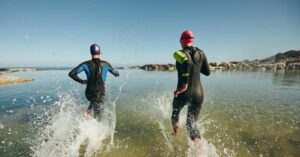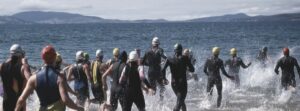Ever wondered why your friends can ride up hills quicker than you?
This feature will help you ride faster and avoid getting dropped.
Let’s start by dispelling a common myth: “To be a faster rider up hills, you need to train on hills more”. It’s not true. The main determinant of performance when riding up a hill is your power to weight ratio. Your power to weight ratio consists of two separate things:
- Your Power Output. Meaning how hard and fast you can pedal for a sustained period.
- Your Total Weight. Including you and your bike, clothes, shoes and anything you carry like bottles, food and tools.
If you can improve your power output or reduce your weight, you will ride faster up hills. Regardless of whether or not you train in hills every day.
How To Reduce Weight
1. Bike Weight
The weight of your bike and everything attached to it affects how fast you ride uphill. Is your bike light or heavy? You can get some idea by weighing it. Simply hold your bike upright, balanced on its back wheel on some bathroom scales. What’s the result?
As an indicator, Tour De France bikes can weigh no less than 15 pounds or 6.8 kilos. Safety rules prevent them from being any lighter. If your bike weighs more than this, it suggests there is room for improvement. If your buddies are riding lighter bikes than you, they will have the advantage.
The best components to upgrade first are rotating ones such as wheels, shoes and pedals, as these give the biggest bang for your buck.
However, there’s no point in spending a fortune on fancy new wheels if your frame and components are old and heavy. Sometimes it’s better to simply trade in your old bike and get a lighter one. You’ll just have to make the most cost-effective overall decision for your situation. Unfortunately, nothing comes for free.
If you have zero budget for upgrades, you could reduce the weight of your bike by minimising what you carry on hilly rides. For example, do you really need two water bottles? Or that big saddlebag full of tools? Could you carry just one bottle and re-fill it on the route if needed? This would save you one pound and improve your power to weight ratio.
2. Rider Weight
Reducing your body weight can make a big difference to your cycling speed in the hills. How much? Well, later in this blog I’ll explain that you can increase your Functional Threshold Power (FTP) by 15 watts by training intelligently for three months. The amazing thing is that you can achieve a similar effect by shedding 3.5 kilos or 7.7 pounds from you and your bike. That would make you a significantly faster hill rider, without improving your power output at all.
Shedding excess body fat is not easy though. To lose one pound in weight per week, you’d need to consume 500 calories less per day, or burn 500 calories more through exercise.
If you did this every day you’d lose weight at a rate of one pound per week (approximately half a Kilo). It’s a sensible rate of weight loss that won’t leave you feeling hungry or tired.
I lose weight at this rate before my key events by tracking my food and exercise using a free smartphone App called MyNetDiary. There are other similar apps available.
How To Improve Power Output
There are no shortcuts when it comes to improving your power output. Essentially you need to train consistently over a period of several months.
Before you launch into training, you should test your current power output with a CP20 test and use it to estimate your Functional Threshold Power (FTP). This acts as a benchmark for future improvements.
Once you have a benchmark you should then aim to train at least three times per week on your bike. Including a mix of high and low-intensity sessions that gradually get more demanding over time. Don’t expect overnight success. Your improvements will occur in a slow “drip drip” way – like coffee working its way through a filter.
If you train intelligently for at least 3 months you’ll start to notice a significant difference in your fitness. In that time you might expect to see an increase in your FTP of around 15 watts (give or take 5 watts). For more training ideas, check out the structured bike sessions in our cycling and triathlon training plans.
5 More Ways To Ride Faster Up Hill
Aside from power output and weight, there are five other ways to improve your hill cycling ability.
1. Gearing
When you ride up hills, you should pace yourself appropriately so you don’t blow up. But it’s hard to do that when you don’t have the right gearing. Riding uphill in a big gear forces you to turn the pedals slowly at a high power output. This can cause muscle micro-trauma and lactate build up – both forms of fatigue.
For hilly rides, it’s better to set your bike up with easier gears, so that you can ride at your optimal intensity without tearing your legs apart.
If you have a 53/39 chainring on the front, you might need a 27, 28 or even 32 or 36–tooth sprocket on the back. If you have a 50/34 chainring on the front, you might still want the option of a 28 or 32-tooth sprocket on the back. Your legs will thank you for it.
2. Upper-Body Strength
When you ride up hills, the stress on your upper body increases. If you’re doing a long ride in the hills, your forearms, shoulders, chest and back will soon get tired. For long rides or multi-day hill cycling events, it’s worth building your strength beforehand. This blog explains how.
3. Rolling resistance
You can save yourself precious Watts by carefully choosing your tyres, wheels and tyre pressure. I use this rolling resistance website to help me make the best choices.
4. Aerodynamics
Aerodynamic drag is not such a big deal when riding up hills, but still of some relevance, especially on lower gradients. Check this article to learn more.
5. Mechanical resistance
This refers to how efficiently all the moving parts on your bike work. For example, a well-maintained chain might save you a couple of Watts. I have written a separate article about this. You could potentially save seven Watts by reading it. For even more articles on this subject, check out the CeramicSpeed website.
